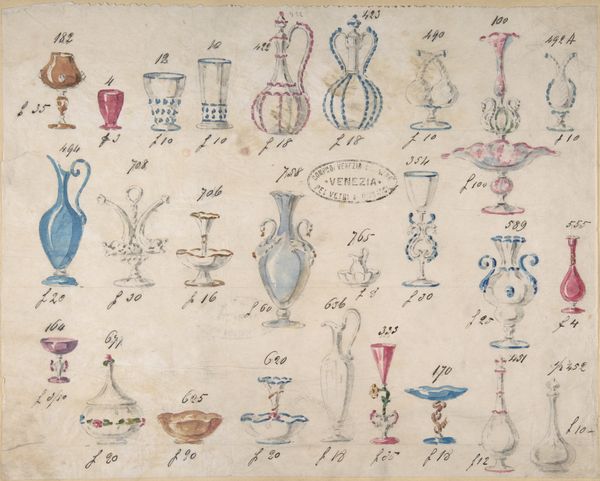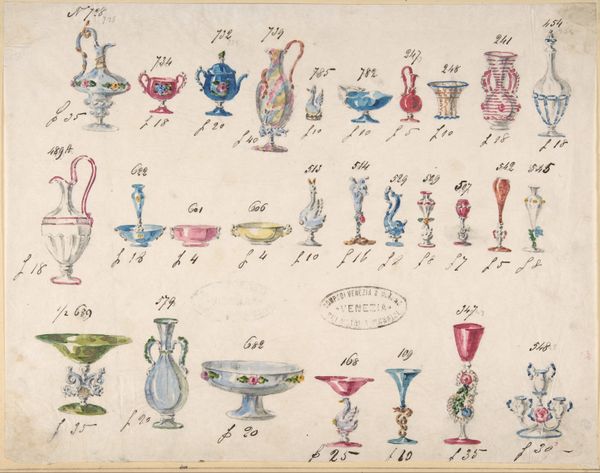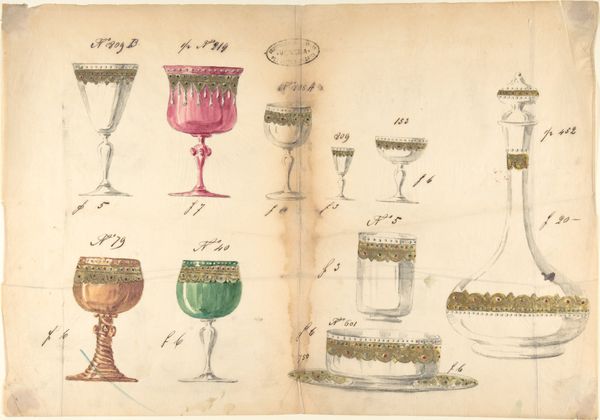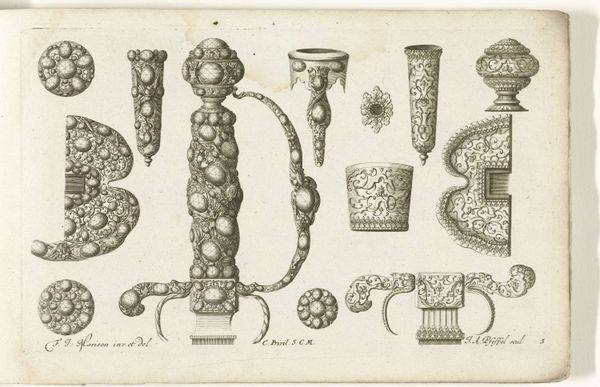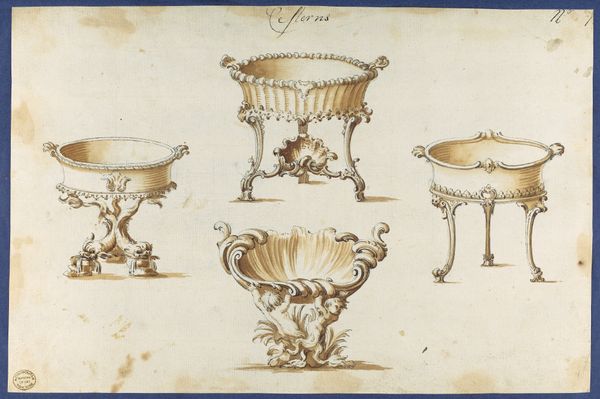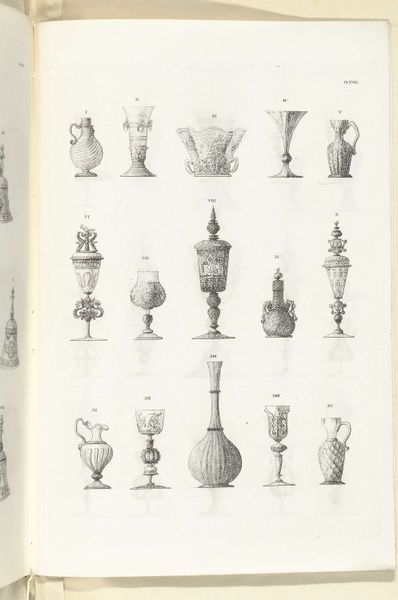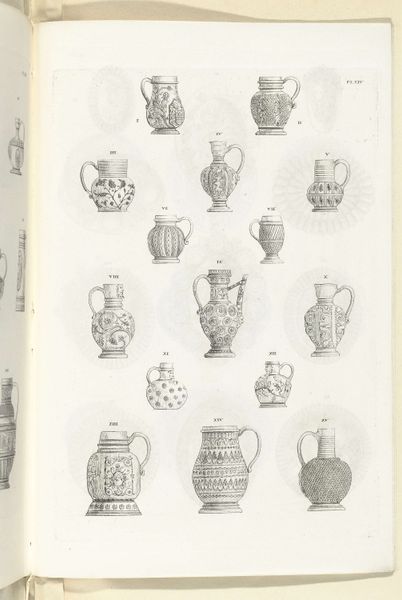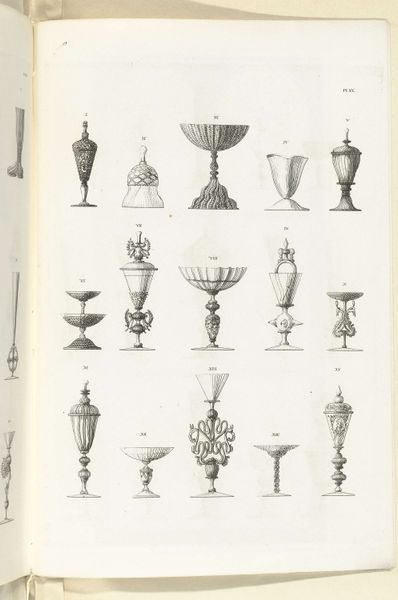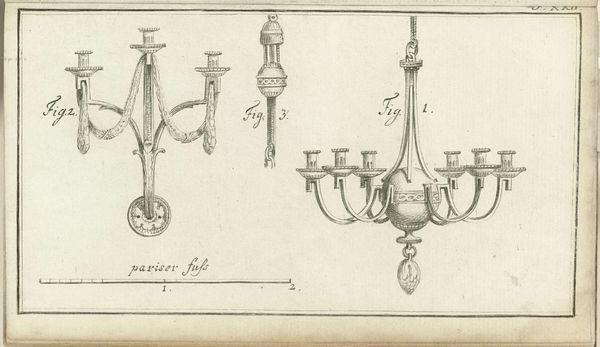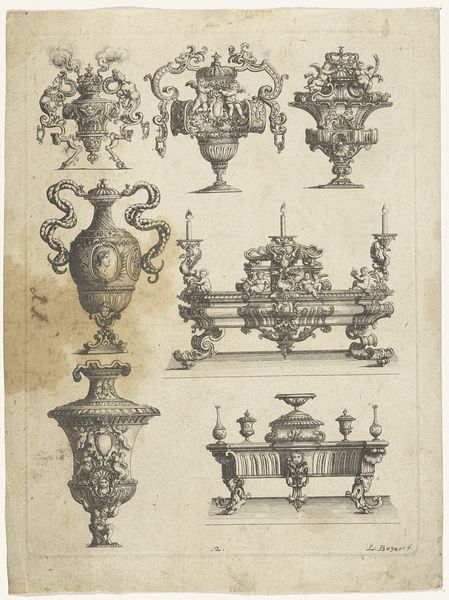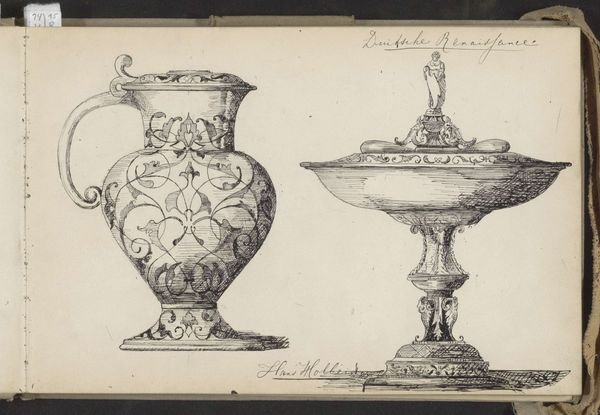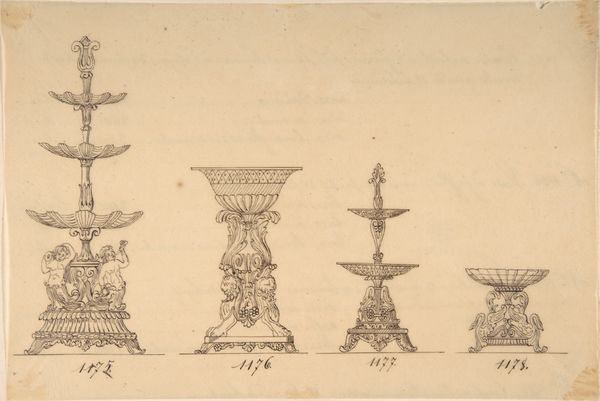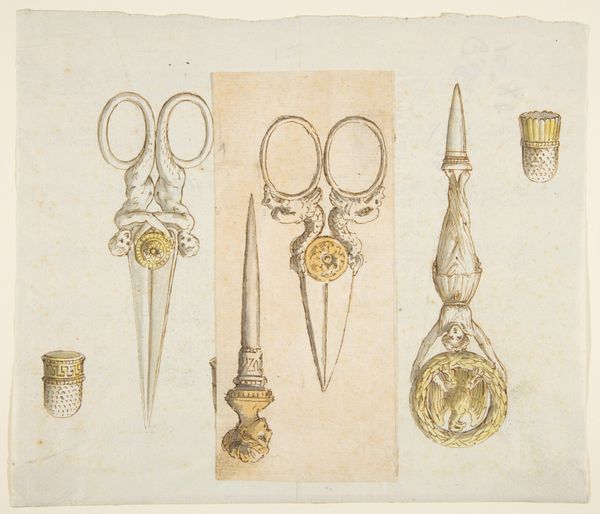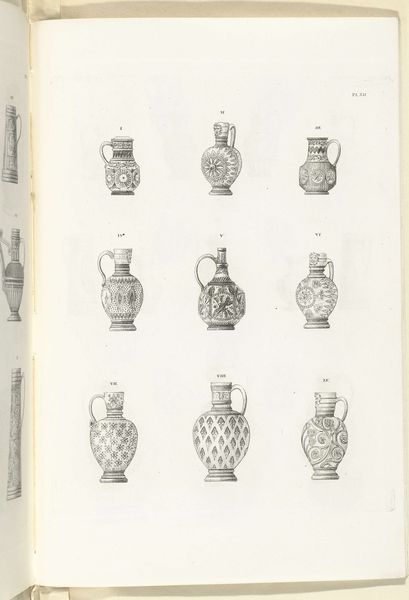
One of Twenty-Three Sheets of Drawings of Glassware (Mirrors, Chandeliers, Goblets, etc.) 1850 - 1880
0:00
0:00
drawing, print, glass, watercolor, ink
#
drawing
# print
#
glass
#
watercolor
#
ink
Dimensions: 14 x 19 in. (35.6 x 48.3 cm)
Copyright: Public Domain
Curator: This work, “One of Twenty-Three Sheets of Drawings of Glassware (Mirrors, Chandeliers, Goblets, etc.)” by Compagnia di Venezia e Murano, was created sometime between 1850 and 1880. It's a sheet comprised of ink, watercolor, drawing, and print featuring different kinds of glassware. Editor: Immediately, I see a matrix of forms, almost like a catalog. The muted watercolor gives these glassware depictions an ethereal, delicate quality, almost like ghosts of luxury. Curator: That is precisely what it is intended to be: a sample book of glassware for prospective buyers. Notice how each piece has an assigned number and a price indicated below. It sheds light on how glass production operated in the 19th century and how design was circulated and consumed. Editor: It highlights the material conditions of art production! Who were the glassblowers, the laborers behind these designs? What socio-economic forces allowed for this kind of industry to thrive, catering to a certain class? The systematic arrangement almost implies a hierarchy, some glasses possibly being more expensive because of their use of material or form, than others. Curator: Indeed, we can assume the more ornate and complex designs required more skill and labor, increasing their value. Think of the tradition of Murano glassblowing, its centuries of accumulated knowledge, the techniques passed down through generations. The labor aspect here can't be ignored. Editor: Absolutely. And thinking about that tradition, it also brings into play themes of cultural heritage and identity. Was the Murano style accessible for all or reserved only for an elite few? Where would we situate its narrative inside global histories of consumption and craftsmanship? Curator: Examining its material history and context allows us to understand these objects as more than just decorative items. It shows us their roles in shaping economic and social systems. Editor: Right. So, beyond the aesthetic appeal, this catalog gives us an insight into a whole network of relations—the people who made these objects, the people who consumed them, and the cultural significance they held within a specific historical moment. Curator: Seeing it from this angle reframes our appreciation, allowing us to unpack the complex stories woven into something seemingly simple as a glassware drawing. Editor: Agreed. It is through considering the multifaceted narratives—labor, material, and class—that these works gain another, critical dimension.
Comments
No comments
Be the first to comment and join the conversation on the ultimate creative platform.
